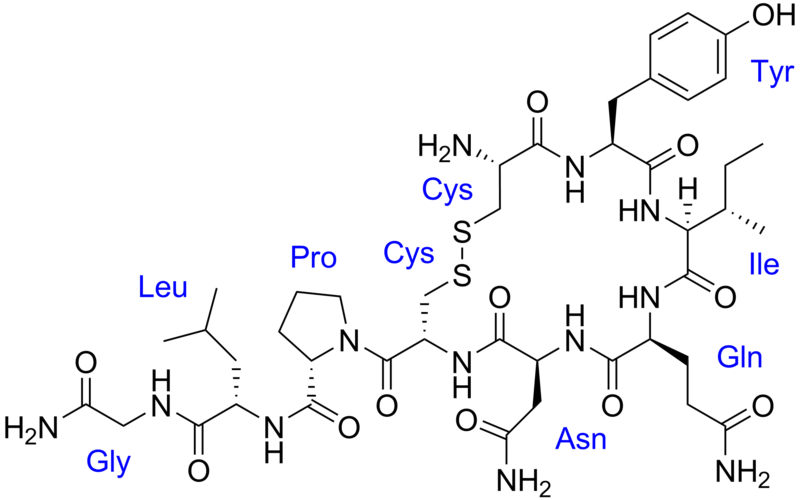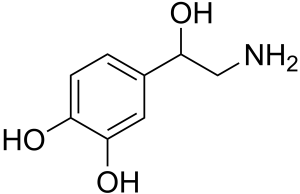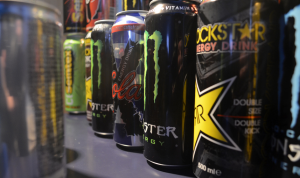To the insecure, the girlfriends, the wives and the crazies: I guess you can finally put an end to splurging on beauty products! It turns out it is not the endless hours we have spent before date nights that reminds your man to remain faithful to you – it is actually because of the hormone, oxytocin. Oxytocin is a hormone secreted by the pituitary gland. It is often referred to as the “love hormone” or the “cuddle hormone” since it’s released during hugging, touching, and other intimate moments.
Many people mistakenly call oxytocin the “love hormone” when “attachment hormone” or “bonding hormone” would be more suitable. This video outlines other chemicals released in the brain through the various stages of romance!


Chemical Structure of Oxytocin
Source: Wikimedia Commons
Monogamy is not prevalent in mammals. In fact, humans are part of the few species that serve as an exception to this and it is oxytocin that is responsible for this partner bonding.
Larry Young, a professor of psychiatry from Emory University in Atlanta, examined prairie vole brain activity during bonding. Young compares these rodents’ behaviour to humans, in that their oxytocin concentrations rise during bonding. It was observed that monogamous male voles had a strong desire for their partner and acted in a hostile manner towards other females.
This video outlines Young’s findings of prairie vole brain activity with regards to bonding.

Dr. René Hurlemann, an executive senior physician from Bonn University Medical Center, and researchers from Ruhr University of Bochum in Germany and the University of Chengdu in China, collaborated to examine the effects of oxytocin in humans, specifically in males. They showed pictures of their female partners and pictures of other women to 40 heterosexual males. These males were given a dose of oxytocin (in a nasal spray form) and then a placebo, on another day.
The Good?
After being administered oxytocin, it appeared that their reward system, in their brain, was very active when shown pictures of their female partners. In fact, according to their brain activity, males found their partners more attractive than other women.
The Bad?
With oxytocin activating the reward system between lovers, Hurlemann suggests that the lack-of oxytocin might be responsible for the immense sadness and depression people experience after parting ways with their partner. Individuals experience a state of withdrawal, with the reward system being significantly less active.
Your best bet for faithfulness would be to increase your oxytocin concentration! Give your special someone a hug or two and complete a challenge together! This should increase activity in your reward system and remind your significant other to remain faithful!
-Brenda Nguyen


























